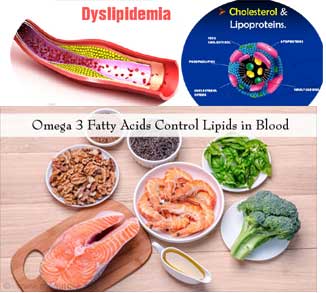
A person suffering from dyslipidemia usually has abnormally high levels of fats in their blood, namely triglycerides and cholesterol.
Cholesterol is found in several different forms: HDL cholesterol is called "good" cholesterol
This high cholesterol level leads to the formation of arterial plaques, which in turn causes the buildup of fatty deposits on the artery walls. These deposits eventually become blood clots, which block the flow of blood from the heart to the brain. This is what is called "arteriosclerosis."
The effects of a high cholesterol level are not restricted to the heart alone. They may lead to hypertension, heart attack, stroke, and kidney failure. For people who suffer from dyslipidemia, they usually develop atherosclerosis in the arteries that supply the brain, especially those that supply the brain's blood vessels with oxygen. This results in a narrowing of the vessels, which eventually stops the blood flow to the brain.
There are two different types of cholesterol: low density lipoprotein (LDL) and high density lipoprotein (HDL). LDL cholesterol is usually made by the liver, and HDL cholesterol is made by the body. In dyslipidemia, LDL and HDL cholesterol levels are usually higher than normal.
When LDL cholesterol is high, they bind to the wall of the artery, making it thinner. When levels are low, LDL cholesterol cannot bind to the artery wall, resulting in plaque, which is a hard deposit on the artery wall. The thickness of the plaque depends on the level of LDL cholesterol in the blood and the severity of the cholesterol condition.
If a person with high cholesterol is exposed to too much stress high cholesterol can damage the liver and kidneys, which are important organs for the production of the required amount of HDL cholesterol. As a result, these organs will be damaged. The more damaged they are, the more they are susceptible to failure. People with dyslipidemia are at a higher risk of these organ failure. Even if their organs are functioning well, high LDL levels can prevent them from making enough HDL cholesterol, causing a condition known as hypercholesterolemia.

Cholesterols, the building blocks of LDL cholesterol, can come from several sources
Foods rich in fats, such as chocolate and butter, can raise cholesterol levels. High consumption of alcohol and tobacco also leads to elevated LDL levels.
For those who suffer from this condition, LDL is usually treated by changing the diet. Some foods are good for reducing LDL levels, while others may be harmful. If LDL levels remain high, then they should be avoided. Foods rich in cholesterol, as well as foods containing saturated fat are the main causes of dyslipidemia.
Foods that can cause this condition include: Red meat, cheese, high-fat dairy products, eggs, nuts, alcohol, and soy. Foods that are good for lowering LDL cholesterol are: Bananas, fish, wheat germ, flax seeds, vegetables, fruits, and whole grain breads.
To reduce the levels of LDL, people suffering from dyslipidemia should be consuming foods that are high in protein and fiber, low in saturated fat, and low in sugar. These foods should also contain antioxidants such as vitamin E and magnesium. These foods should also include fish, nuts, vegetables, and legumes.
A healthy lifestyle should include regular exercise. Regular exercise is proven to reduce the risk of coronary disease and heart attack. Regular exercise is particularly important for those with dyslipidemia.
Diets and exercise should be part of the treatment of all types of dyslipidemia. The good news is that a proper diet and regular exercise can lower LDL cholesterol as well as high blood pressure.